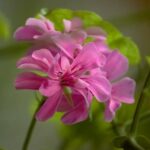When it comes to creating a lush and vibrant outdoor oasis, a tropical garden design layout is the perfect way to bring the beauty of the tropics to your own backyard. Whether you live in a warm climate or want to bring a touch of the exotic to your more temperate environment, incorporating elements of tropical garden design can transform your outdoor space into a stunning retreat.
From lush foliage to colorful blooms, the key to any successful tropical garden design layout lies in its careful planning and execution.
In this article, we will explore the fundamental principles of tropical garden design layout, including key elements that define these types of gardens and how to choose the right plants for your space. We will also discuss the importance of proper drainage in creating an optimal environment for tropical plants, as well as ways to create focal points and pathways that enhance the overall appeal of your garden.
Additionally, we will delve into the art of incorporating water features into your tropical garden design layout, as well as provide maintenance tips to ensure that your garden remains vibrant and healthy year-round. Lastly, we will showcase real-life examples of stunning tropical garden design layouts through various case studies, offering inspiration and practical insights for anyone looking to embark on their own tropical gardening journey.
Whether you are a seasoned gardener or just starting out, this article will provide valuable information for bringing a touch of paradise to your outdoor space.
Key Elements of a Tropical Garden Design Layout
When it comes to creating a tropical garden design layout, there are several key elements that can help achieve the desired look and feel. One important element is the use of lush, dense vegetation that is characteristic of tropical regions. This can include palm trees, bamboo, ferns, and other large leafy plants that create a sense of abundance and natural beauty.
Another key element is the use of vibrant and colorful flowers. Tropical gardens are known for their stunning displays of color, so incorporating a variety of flowering plants such as orchids, hibiscus, and bird of paradise can help bring the garden to life. These flowers not only add visual appeal but also attract pollinators such as butterflies and hummingbirds.
In addition to vegetation and flowers, the use of natural materials such as stone, wood, and water features can add an extra layer of authenticity to a tropical garden design layout. Stone pathways, wooden bridges, and small ponds or waterfalls can all contribute to creating a serene and tranquil atmosphere reminiscent of a tropical paradise.
| Key Element | Description |
|---|---|
| Lush Vegetation | Includes palm trees, bamboo, ferns for abundance and natural beauty. |
| Colorful Flowers | Incorporating orchids, hibiscus, and bird of paradise for vibrant displays. |
| Natural Materials | Utilizing stone pathways, wooden bridges, water features for authenticity. |
Choosing the Right Plants for Your Tropical Garden
When it comes to creating a tropical garden design layout, choosing the right plants is crucial in achieving that lush and vibrant look. Tropical gardens are known for their abundance of exotic and colorful plants that thrive in warm and humid conditions. To create the perfect tropical oasis in your own backyard, here are some key considerations when selecting plants for your garden.
Understanding Climate and Soil
Before selecting plants for your tropical garden, it’s important to understand the climate and soil conditions in your area. Tropical plants typically thrive in warm and humid climates with well-drained, fertile soil. Research the specific needs of each plant to ensure they will thrive in your local environment.
Choosing Exotic Foliage and Flowers
One of the defining features of tropical gardens is their exotic foliage and vibrant flowers. Look for plants with large, glossy leaves, bold colors, and unique textures to create visual interest in your garden. Consider options such as bird of paradise, heliconias, ginger plants, or orchids to add a touch of exotic beauty to your outdoor space.
Creating Layers and Textures
Incorporating a variety of plant heights, shapes, and textures can add depth and dimension to your tropical garden design. Consider layering different types of palms, ferns, and bananas to create a lush and multi-dimensional landscape. This can help create a more naturalistic look that mimics the diversity found in tropical rainforests.
By carefully selecting the right plants for your tropical garden design layout based on climate, foliage, flower colors, layers,and textures,you can create a stunning outdoor oasis that transports you to a tropical paradise right in your own backyard.
Importance of Proper Drainage in a Tropical Garden Design Layout
Proper drainage is an essential element of a successful tropical garden design layout. The high levels of rainfall and humidity in tropical climates can lead to waterlogged soil, which can be detrimental to the health of your plants. Without adequate drainage, plants may suffer from root rot and other water-related issues.
One way to ensure proper drainage in your tropical garden is to incorporate raised beds or mounds. These raised areas allow excess water to flow away from the plant roots, preventing waterlogging. Additionally, using well-draining soil mixtures can help improve overall drainage in your garden.
Another important consideration for proper drainage is the use of mulch. Mulching not only helps retain moisture in the soil but also improves aeration and drainage. Organic mulches such as bark, wood chips, or straw can break down over time, improving the soil structure and promoting healthy drainage.
It’s also crucial to pay attention to the slope of your garden landscape. If your garden is on a slope, it’s important to create terraces or retaining walls to prevent erosion and ensure proper water runoff during heavy rainfall. Proper grading and contouring of the land will help direct excess water away from plants and into designated drainage areas.
| Aspect | Details |
|---|---|
| Raised Beds | Allow excess water to flow away from plant roots |
| Mulching | Improves aeration and promotes healthy drainage |
| Landscape Slope | Create terraces or retaining walls for proper water runoff |
Creating Focal Points and Pathways in Your Tropical Garden
When designing a tropical garden, creating focal points and pathways is crucial in achieving a visually appealing and functional outdoor space. Focal points draw the eye and create visual interest, while pathways provide a sense of structure and guide visitors through the garden. Here are some key considerations for creating focal points and pathways in your tropical garden:
- Choose focal points that capture attention: Consider incorporating elements such as colorful flowering plants, unique sculptures, or water features as focal points in your tropical garden. These elements can serve as visual anchors and add a touch of personality to the overall design.
- Create meandering pathways: Instead of straight lines, opt for curved pathways that mimic natural forms found in tropical landscapes. This can create a sense of discovery as visitors wander through the garden, allowing them to experience different views and plantings along the way.
- Use paving materials creatively: Select natural stone pavers or pebble mosaics to add texture and visual interest to pathways. These materials also enhance the tropical theme by resembling natural elements commonly found in tropical environments.
In addition to creating focal points and pathways, it’s important to consider how these elements interact with the overall layout of your tropical garden. Proper placement of focal points and pathways can contribute to an inviting and harmonious outdoor space that reflects the beauty of the tropics.
By carefully planning and implementing focal points and pathways in your tropical garden design, you can create an enchanting outdoor oasis that captures the essence of a lush tropical paradise right in your own backyard.
Incorporating Water Features in Your Tropical Garden Design
Types of Water Features
There are various types of water features that you can incorporate into your tropical garden design, such as fountains, ponds, waterfalls, and streams. Each type has its own unique appeal and can contribute to the overall aesthetic of your garden.
Benefits of Water Features
Water features not only add visual interest to your garden but also provide soothing sounds that can help mask unwanted noise from the surroundings. Additionally, the presence of water can attract wildlife such as birds and butterflies, adding another layer of natural beauty to your tropical oasis.
Design Considerations
When incorporating water features into your tropical garden design layout, it’s important to consider the scale, placement, and maintenance requirements of each element. The size and style of your garden will influence the choice of water feature, and careful planning is necessary to ensure that the design complements the overall theme of your tropical garden while also being functional and sustainable.
Maintenance Tips for Your Tropical Garden
Maintaining a tropical garden requires regular care and attention to ensure that it thrives in its lush environment. Here are some essential maintenance tips to keep your tropical garden looking its best:
- Regular Watering: Tropical plants thrive in moist conditions, so be sure to water your garden regularly, especially during dry spells. Consider installing a drip irrigation system to ensure even watering.
- Weeding: Keep an eye out for weeds in your tropical garden and remove them promptly. Weeds can compete with your plants for nutrients and water, so it’s essential to stay on top of them.
- Pruning and Trimming: To maintain the lush and dense look of a tropical garden, regular pruning and trimming are necessary. Trim overgrown branches and remove dead foliage to promote healthy growth.
In addition to these basic maintenance tasks, it’s also important to keep an eye out for pests and diseases that can affect tropical plants. Regular inspection of your garden will help you identify any issues early on.
With proper maintenance, your tropical garden will continue to flourish and bring you joy throughout the year. By following these tips, you can ensure that your tropical oasis remains a beautiful and vibrant space for relaxation and enjoyment.
Case Studies
Creating a stunning tropical garden design layout requires careful planning and consideration of key elements that capture the beauty and essence of the tropics. One way to gain inspiration and insight into designing your own tropical garden is by looking at real-life examples of successful layouts. Case studies offer a firsthand look at how different elements can be incorporated to create a cohesive and visually appealing tropical garden.
In these case studies, you will find a variety of tropical garden designs, each with its own unique features and layout. From lush landscapes with towering palm trees to intimate retreats nestled among vibrant foliage, these real-life examples showcase the versatility of tropical garden design. By studying these case studies, you can gain valuable ideas for incorporating similar elements into your own garden space.
One common feature among stunning tropical garden design layouts is the use of diverse plant species to create depth and visual interest. These case studies will demonstrate how different combinations of plants, from exotic flowers to towering ferns, can be used to evoke the lushness and diversity of tropical landscapes. Additionally, these real-life examples will provide insight into how pathways, water features, and focal points are integrated to enhance the overall aesthetic appeal and functionality of the gardens.
Conclusion
In conclusion, bringing the beauty of the tropics to your own backyard is an achievable goal with the right knowledge and planning. By incorporating key elements such as lush greenery, vibrant flowers, and natural materials into your garden design, you can create a tropical oasis right at home.
Choosing the right plants for your climate and ensuring proper drainage will help to maintain a healthy and thriving garden. Additionally, creating focal points, pathways, and water features can add a touch of luxury and tranquility to your outdoor space.
Remember that maintenance is key to keeping your tropical garden looking its best. Regular watering, pruning, and fertilizing will help to keep your plants healthy and vibrant. With careful planning and attention to detail, you can create a stunning tropical garden that will be the envy of your neighborhood.
Looking at real-life examples of stunning tropical garden design layouts can provide inspiration for your own landscaping project. Whether you have a small urban courtyard or a spacious suburban yard, there are endless possibilities for bringing a taste of the tropics to your outdoor space. With dedication and creativity, you can transform your backyard into a paradise that you can enjoy for years to come.
Frequently Asked Questions
How Do You Plan a Tropical Landscape?
Planning a tropical landscape involves selecting lush, exotic plants that thrive in warm, humid climates. Consider incorporating palm trees, colorful flowering plants, and dense foliage to create a tropical feel. It’s important to also include elements like water features or rock formations to add visual interest and mimic the natural beauty of tropical regions.
How Can I Make My Yard Look Tropical?
To make your yard look tropical, focus on creating a lush and vibrant atmosphere with an abundance of greenery and colorful blooms. Planting large-leaved plants such as elephant ears or banana plants can help achieve a tropical look.
Adding in some outdoor furniture with bright cushions or installing a hammock can also contribute to the overall relaxed and vacation-like ambiance.
What Does a Tropical Garden Look Like?
A tropical garden typically features an array of vibrant, exotic plants that create a dense and lush landscape. The garden may be filled with various species of palms, ferns, orchids, and other flowering plants known for their bright colors.
In addition, paths or walkways lined with stones or wooden planks can enhance the natural and wild appeal of a tropical garden. Ultimately, it’s all about creating a space that feels like a peaceful oasis amidst abundant greenery and flourishing plant life.

Welcome to my gardening blog! I am passionate about plants and enjoy sharing my knowledge and experiences with others. In this blog, I will write about everything related to gardening, from tips on how to get started to updates on my own garden projects.





